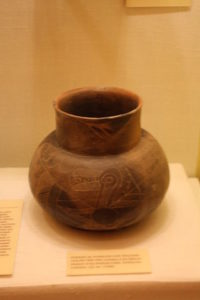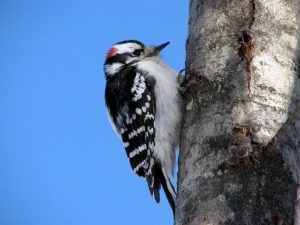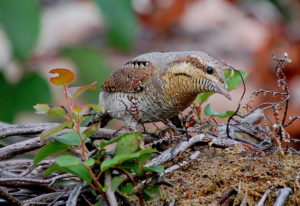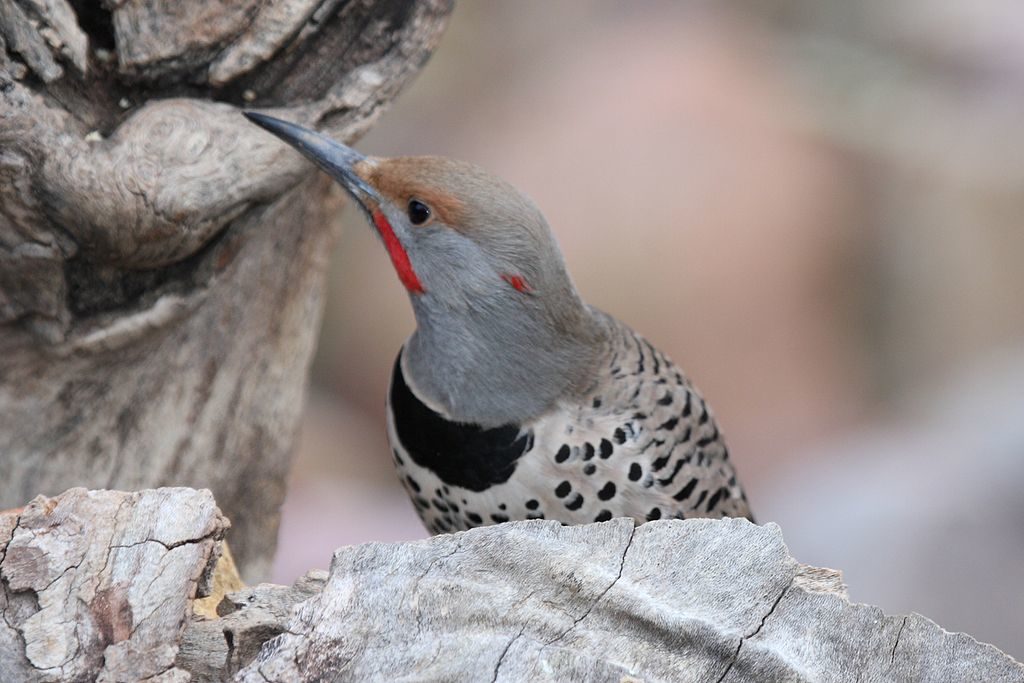The waters of Moose Mountain Pond were unusually clear when I was there Saturday, and I saw lots of these creatures underwater, so ugly they’re cute. The sounds of bullfrogs around the pond told me what these things are. This made me think about how fascinated I was as a child with the bottoms of creeks, rivers, and ponds. My brother and I would spend hours wading in the creek looking at things. It was a parallel universe that I thought about quite a bit, one that I could examine but not really enter. Today I see parents and grandparents tagging along with children carrying little nets, sharing the excitement of the underwater world while teaching the children to be gentle and not harm the objects of their curiosity. Summer is here, finally, and there are all kinds of worlds to explore beneath the surface.
Category: Animals
Turtle’s Choice
June 17, 2016Woodpecker Archeology
June 10, 2016
The woodpecker archaeological record in Europe is sparse. Woodpecker bones were found with other bird and animal bones at a Mesolithic site in Serbia and I found reference to an atlatl (a primitive spear throwing device) that had a decorative White-backed Woodpecker from an unspecified European site. Where the archaeological woodpecker record is rich is again in North America. Woodpecker skulls and bills were apparently traded. Woodpeckers are found on pottery and shell engravings. Of course, archaeologists in North America have contemporary Amerindians with tribal memories to help them interpret findings and ask the right questions. Some woodpecker designs are stylistic and might be missed without this insight. Another factor is that archaeology in North America typically goes back about a thousand years while Mesolithic Europe was ten thousand years ago. Finally, it should be considered that since pecking wood is the sine qua non of the woodpecker, effigies of the bird might have been carved in wood rather than more durable bone or stone.
Woodpeckers and Weather
June 3, 2016
North American folklore says that woodpeckers predict the severity of the coming winter and that woodpeckers disappear in anticipation of extreme cold. A pervasive belief found in Europe is that the pecking is a sign of rain on the horizon, perhaps because the loud pecking of some species can resemble a distant thunder roll. In this regard, it is interesting that the woodpecker is the bird of the redheaded Norse god Thor, who wields the hammer and lightning bolt. More obscurely, the woodpecker is said to lead an observer to treasure. I have found that birds who bring rain are very often considered treasure birds.
The treasure the woodpecker is most thrillingly believed to lead to is the springwort. The springwort is a reddish root believed to draw down lightning. It can open any closed or locked door. To find the springwort magicians would seal the entrance to a woodpecker nest. The woodpecker would then fly off to find a springwort, but would be induced to drop the plant when he returned and found that the seal had been removed. The springwort sounds like a very valuable herb, but nobody really knows what a springwort is. Jacob Grimm identified it as the Caper Spurge or Euphorbia Lathyris.
Wryneck Inyx
May 27, 2016
The Eurasian Wryneck is a drab black-and-cream bird in the woodpecker family without the woodpecker’s typical coloring, long bill, or pecking habit. She forages on the ground and appropriates abandoned tree cavities. She twists her neck in an uncanny way and for this reason she has traditionally been used in reversing spells, especially spells to win back an errant lover. In one of the Greek epics the unwilling heart of Medea, a witch-protégé of Circe and priestess of Hecate, is won using a Wryneck spell. In another myth the goddess Hera changes the nymph Iynx into a Wryneck in retaliation for messing up Hera’s love life. Iynx’s name is the root of the English word “jinx.”
Although the Wryneck sounds like a woodpecker and is placed in the woodpecker family by modern taxonomists, it is unclear how the ancients linked the two. Pan, son of Dryope, is father of Iynx, so they seem to have some relation.
Classical Woodpecker Deities
May 20, 2016
Mars is not the only Classical deity associated with the woodpecker. There is a hero named Picus, a son of Mars who is changed into a woodpecker by Circe, the witch of the Aegean. When he returns to his manly form he has acquired awesome powers of prophecy due to his ability to understand the speech of woodpeckers. Picus later becomes the father of Faunus, the Roman equivalent of the wilderness god Pan.
Alternately, Picus is the first king of the central Italian Peninsula and the son of Saturn. A female woodpecker lands on his head one day, and the Etruscan augur interprets this as a sign of a disastrous armed conflict for the country. Picus personally wrings the neck of the messenger bird, thereby diverting the misfortune onto himself. This self-sacrificing act is more in line with that of a tribal chieftain than a stereotypical king, indicating that this story goes quite a bit back in time.
Among female woodpeckers, there is a Greek deity named Dryope, whose name according to Robert Graves means “woodpecker.” She seems to be a type of dryad. In one story she is transformed into a Lotus Tree and in another into a Black Poplar. Both times she is trying to escape the dastardly clutches of the god Apollo, which is a theme associated with the usurpation of a goddess cult by the priests of Apollo. Dryope is the mother of the god Pan.
The Woodpecker Laughs
May 6, 2016
North American aboriginal lore is rich in story and folklore about the woodpecker. This wisdom is usually absent in Native animal-spirit books targeted to a mass audience, a testament to the lack of interest most English speaking people have in this bird. In a Lenape (mid-Atlantic) tale Rabbit is invited to dine with the twelve Woodpecker Girls and is impressed with the gourmet meal of grubs they offer him. He is envious and determined to outdo them. Rabbit is very talented – he molded the clan animals from the animals who died during the Great Flood – but unfortunately his pride in this instance is greater than his own greatness. He invites the Woodpecker Girls to dine with him and attempts to re-create the grub delicacies with disastrous results. The Woodpecker Girls laugh at him. This is why Woodpecker laughs at everything, even Creator.
In a myth attributed to the Hasinai-Caddo (Texas), people become woodpeckers after abusing a mescaline producing plant (like peyote). Elders warn that only those initiated in medicine ways should touch the plant, but most people ignore the warnings and spend their days caught up in visions. They forget about their children and one day notice that the children are missing. Creator hears the distraught cries of the parents and changes them into woodpeckers so they can hunt for their children. This is why woodpeckers tap at trees and poke into holes: they are looking for their children.
More From the Woodpecker Files
April 29, 2016
The European Green is the clown of the woodpecker world, with red, yellow, and green plumage. He makes nest cavities in trees but mostly forages for insects on the ground.
The video involving a Green below is one of the stranger woodpecker stories you’ll ever hear about. Do you think this is real?
Drawing in the Light
April 15, 2016
After a feast of new material, I have not been posting much original content lately, so I thought I’d tell everyone what I’m up to right now.
I just finished a short essay with photos for Moon Books Blog and will have that link up next week. I also finished a piece recently for the Mago Books anthology She Rises volume 2, which I believe will be out later this year. I have articles in three other upcoming anthologies but don’t have dates for those yet.
I am focusing on finishing my second book as much as I can. Right now I’m working a chapter on (surprise!) the woodpecker. I will have a short graphic story in this chapter, which is something I’ve never tried before. I’ve had to learn how to draw in order to do this, which means it has been very time consuming. It is coming along well though.
I am enjoying the sun and the warmer weather today. The ice is gone and water birds are returning. So grateful for spring!





